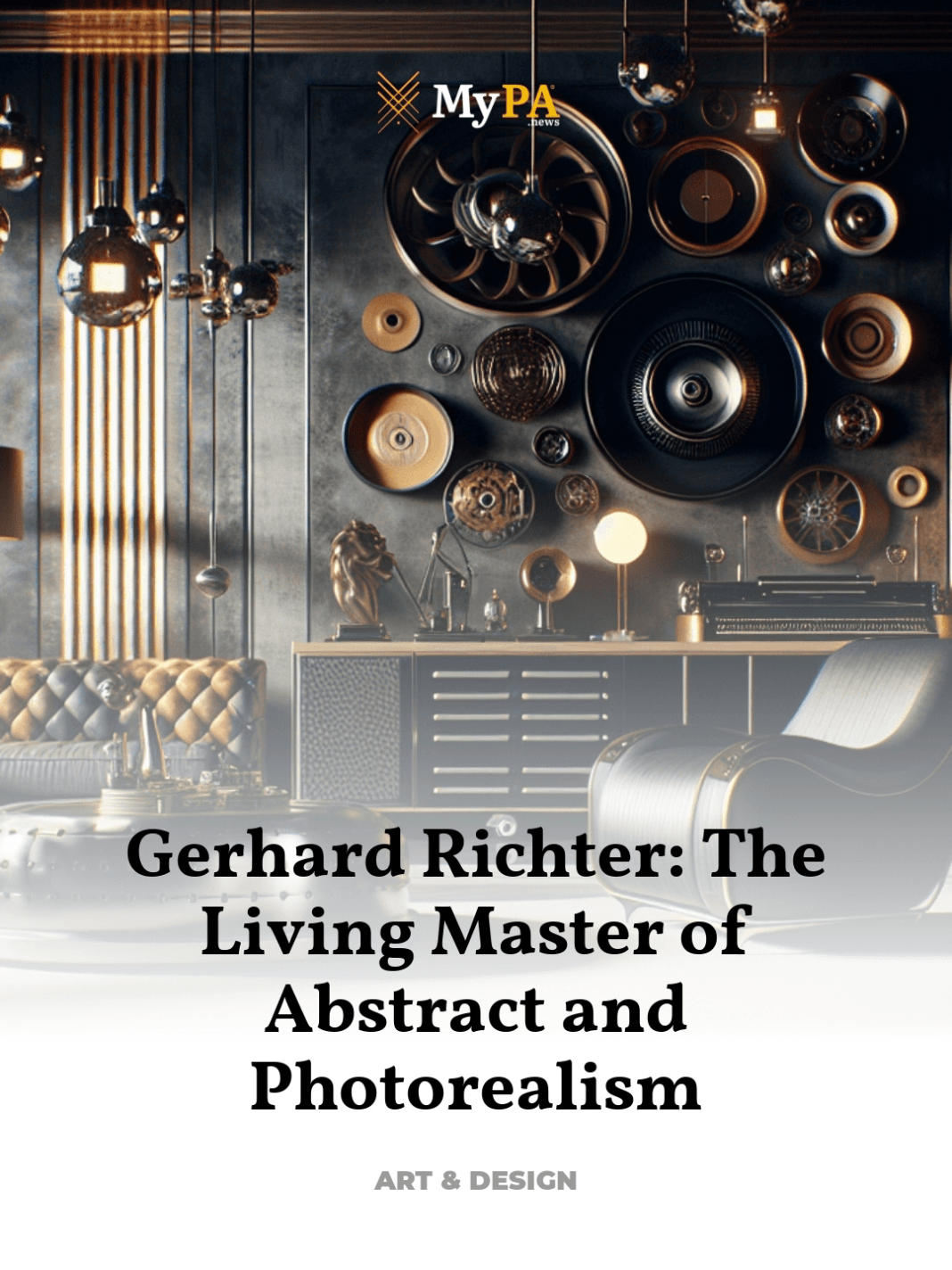A titan in the realms of contemporary art, seamlessly bridges the gap between abstract and photorealistic art
His unique ability to blend these seemingly disparate styles not only challenges the boundaries of artistic expression but also captivates a global audience, making his works profoundly sought-after in the spheres of luxury and collectibles.
- Life and Artistic Influence of Gerhard Richter
- Mastering Photorealism: A Closer Look
- The Abstract Dimensions: Exploring Richter’s Techniques
- Cultural Impact and Global Recognition
- The Collectibility of Richter’s Art
- Final Reflections on Richter’s Artistic Legacy
Life and Artistic Influence of Gerhard Richter
Born in Dresden, Germany, in 1932, Gerhard Richter’s career spans over six decades, during which he has established himself as one of the most influential artists of the contemporary era. His early life in post-war East Germany and subsequent migration to the West profoundly influenced his artistic style and thematic choices. Richter’s extensive oeuvre is characterized by a rigorous exploration of the visual and cultural possibilities of painting.
Richter’s artistry is deeply rooted in his exploration of the tensions between reality and representation, often blurring the lines between photographic imagery and painterly abstraction. His works, whether they are lush abstracts or hyper-realistic paintings, interrogate the nature of images and their cultural resonance. This duality not only defines Richter’s style but also reflects his philosophical inquiry into the “illusion of reality” perceived through art.
Mastering Photorealism: A Closer Look
Richter‘s photorealistic paintings are astonishing in their precision and depth. These works often begin with a photograph which Richter projects onto canvas, meticulously replicating every detail with oil paints. His famous ‘blur’ technique, where he softly smears the paint with a squeegee, introduces a haunting sense of motion and transformation, suggesting the fluidity and impermanence of memory and perception.
One of the most iconic examples of Richter’s photorealism is his series “48 Portraits,” displayed at the 1972 Venice Biennale. The series features grayscale portraits of historically significant men, rendered with meticulous attention to detail. Each portrait is both a testament to the individual’s historical impact and a commentary on the collective cultural memory, blurring the lines between individual identity and universal humanity.
The Abstract Dimensions: Exploring Richter’s Techniques
In contrast to his photorealistic works, Richter’s abstract pieces are dynamic and fluid, characterized by bold color palettes and dramatic textural contrasts. His abstracts are often created through a layered process of applying and then scraping away paint, a method that introduces elements of chance and spontaneity into his work. This technique not only breaks down the traditional boundaries of form and color but also challenges the viewer’s perception of space and depth.
Richter’s abstract works, such as the celebrated “Abstract Painting (911-4),” evoke a sense of controlled chaos and invite viewers to explore their personal reactions to the interplay of colors and shapes. These paintings are not just visual experiences but are also profound engagements with the process of creation itself.
Cultural Impact and Global Recognition
Richter’s influence extends beyond the canvas; his works have become pivotal in discussions about modern art and its role in society. Museums around the world, such as the Museum of Modern Art in New York and the Tate Modern in London, regularly feature Richter’s works, affirming his status as a critical bridge between the modern and contemporary art scenes.
Moreover, Richter’s ability to resonate with both European and American audiences underscores his universal appeal. His exhibitions often attract a diverse range of viewers, from seasoned art collectors to those new to the art world, all drawn by his reputation and the compelling power of his works.
The Collectibility of Richter’s Art
The market for Richter’s art is robust, driven by his reputation as a master of both abstract and photorealistic techniques. His pieces are highly prized not only for their aesthetic and intellectual appeal but also for their historical significance. Collectors and museums alike vie for his works, which are seen as pivotal investments in the legacy of contemporary art.
Notable sales, such as Richter’s “Abstraktes Bild,” which sold for $46 million at Sotheby’s, underscore the high demand and substantial esteem in which his art is held. Each piece by Richter is a part of a broader narrative that reflects the evolving trends and tastes within the global art market.
Final Reflections on Richter’s Artistic Legacy
Gerhard Richter’s journey through the landscapes of abstract and photorealistic art has not only marked him as a pivotal figure in contemporary art but also as a visionary who continues to influence the trajectory of visual culture. His works challenge, mesmerize, and invite contemplation, bridging the gap between the seen and the unseen, the real and the imagined.
As we continue to witness Richter’s evolution, his legacy offers a profound commentary on the power of art to reflect and reshape our understanding of the world. For further exploration of Richter’s impact and works, esteemed institutions like the Museum Ludwig in Cologne provide extensive collections and insightful retrospectives.
For more detailed insights into Gerhard Richter’s art and impact, visit Museum Ludwig’s official website.



